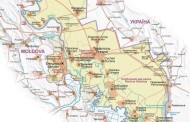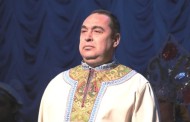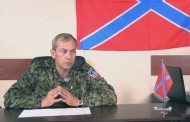NATO defense ministers agreed on Thursday to set up a network of command centers in eastern Europe and more than double the size of its rapid reaction force to better protect the region in the event of any threat from Russia.
NATO Secretary-General Jens Stoltenberg said the measures,
part of the alliance’s response to Russia’s annexation of Ukraine’s Crimea, amounted to “the biggest reinforcement of our collective defense” since the end of the Cold War 25 years ago.
With East-West tensions running at their highest since the Cold War era, NATO has made clear it will not intervene in Ukraine but will bolster the defenses of nervous eastern allies who were under Moscow’s domination for four decades until 1989.
Ministers agreed to more than double the size of NATO’s existing rapid reaction force to 30,000 soldiers from 13,000, led by a 5,000-strong “spearhead” force, part of which will be ready to move within 48 hours, according to Stoltenberg.
Britain, France, Germany, Italy, Poland and Spain will take turns in commanding the spearhead force, Stoltenberg said.
The alliance will establish a new northeastern regional headquarters in Poland and a smaller southeastern headquarters in Romania.
Six command centers, staffed by national and NATO officers, will be set up in Poland, Romania, Bulgaria and the three Baltic states to plan exercises and organize reinforcements for those countries in an emergency.
“They (the Russians) should get the message that we and other countries have been delivering to them – that they should back off from their aggression against Ukraine,” Canadian Defense Minister Rob Nicholson told Canada-based reporters by phone from Brussels.
The plan, which builds on decisions taken at NATO’s summit in Wales last September, falls short of the hopes of some eastern European countries for NATO to set up large bases in the region, but it raised concern in Russia.
“This is very worrying,” Russian Foreign Ministry spokesman Alexander Lukashevich said of the rapid reaction force.
“This is about creating additional operational capabilities that would allow the alliance to react near the Russian borders … Such decisions will naturally be taken into account in our military planning,” he said.
Britain announced it would lead the rapid reaction force in 2017 and would send officers to all eight new centers.
U.S. Defense Secretary Chuck Hagel told the meeting that Washington would provide staff officers as well as technical and logistical expertise to the new command centers.
NATO officials, in a nod to southern European NATO allies who do not think the alliance should look only eastwards, said the new measures would help the alliance deal with threats from the Middle East and North Africa as well as Russia.
Ministers also discussed growing concerns within NATO about Russia’s nuclear strategy and indications that Russian military planners may be lowering the threshold for using atomic weapons in any conflict, diplomats said.






Recent Comments
Artem ADE in: Виталий Кличко выехал на полигон учиться спасать людей в случае чрезвычайных ситуаций (ВИДЕО)
Эх... Виталий Виталий... ...
Daniel in: Russia may ban fruit imports from Serbia: RIA
Great news Russian Brothers! Serbia and the Serbs are occuoied by our ...
Randolph Kraus in: The meeting of the heads of the FAM of countries of Norman Four has not been planned
what can they accomplish while the us is supplying hardware? ...
NRP in: Spotkanie "normandzkiej czwórki"odwołane
Czy wiadomo dlaczego spotkanie nie dojdzie so skutku? ...
NRP in: Ukraińcy w Polsce
Straszna tragedia dla narodu Ukrainy. Dobrze, że młodzi ludzie nie chc ...